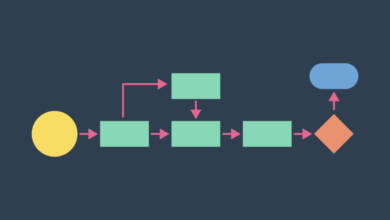The Role of Technology and Collaboration in Navigating Mass Tort Litigation

Introduction to Mass Tort Litigation
Mass tort litigation is a vital mechanism within the legal system, designed to handle cases where numerous plaintiffs are affected by similar issues. Unlike class-action lawsuits, where plaintiffs collectively bring a case against a defendant, mass tort litigation involves individual lawsuits linked by shared grievances or damages emanating from the exact cause. Often, these cases are directed at large corporations and cover issues such as pharmaceutical defects, environmental disasters, or consumer product failures. The involvement of numerous individuals requires careful organization and strategic planning to achieve justice efficiently.
Employing a mass tort intake service can facilitate the early stages of these legal pursuits by enabling efficient information gathering and processing. This approach saves time and ensures that relevant details are captured accurately, laying a solid foundation for the cases as they progress through the litigation process.
The Challenges Faced in Mass Tort Cases
Mass tort cases are inherently challenging due to their scope and intricacy. Legal professionals managing these cases must deal with multiple plaintiffs with unique circumstances and evidence. This situation is further complicated by the requirement to coordinate across different jurisdictions, which may have varying legal standards and requirements. Additionally, the sheer volume of data—from medical records to product testing results—necessitates a robust data management and review framework.
Furthermore, the timeline of mass tort cases can be extensive, stretching over several years before resolving. This prolonged duration increases the pressure on legal teams to maintain momentum and drive the case forward while keeping all parties informed and engaged. Addressing these challenges demands innovative solutions and strategic planning, underscoring the need for technological support and collaborative efforts.
Embracing Technological Advancements
Technological advancements have revolutionized the approach to mass tort litigation in recent years. Cutting-edge tools such as AI-driven analytics and sophisticated data management systems enable legal teams to handle large volumes of data more effectively. These technologies facilitate the organization, categorization, and analysis of evidence, helping legal professionals build more substantial cases. AI tools, for instance, can assist in predicting potential outcomes based on historical data patterns, thereby guiding strategic decisions and preparing for potential opposition moves.
Digital resources streamline workflows, enabling legal teams to interact with data more strategically and reveal insights that could otherwise be lost in the noise of information overload. As these technologies are more thoroughly incorporated into legal procedures, they promise to improve case assessment accuracy, reduce time, and speed up case management.
Collaborative Efforts: The Key to Success
Collaboration lies at the heart of successful mass tort litigation. The multifaceted nature of these cases requires input from numerous experts, ranging from legal advisors to scientific specialists and medical consultants. By fostering cohesive partnerships among these diverse stakeholders, legal teams can thoroughly investigate all aspects of the case and develop comprehensive strategies.
Effective communication and information-sharing platforms are critical in ensuring all parties remain aligned and informed throughout the litigation process. These platforms allow teams to synchronize their efforts, pool resources, and leverage each other’s expertise to address complex questions and challenges. This coordinated effort strengthens the case and increases the chance that the plaintiffs will receive a positive result.
Legal Considerations and Ethical Concerns
Mass tort litigation is a complex field not only because of its legal challenges but also due to the ethical considerations inherent in handling large groups of plaintiffs. Lawyers must balance advocacy and ethical responsibility, avoiding conflict of interest while ensuring each client’s interests are represented fairly. Issues like client confidentiality, informed consent, and the fair distribution of settlements are paramount in preserving the integrity of the legal process.
These ethical standards underscore the importance of transparency and accountability in mass tort litigation. Legal teams must be vigilant in upholding these principles to protect their clients and reinforce the trust and credibility of the legal system.
Case Studies Highlighting Effective Strategies
Historical mass tort cases provide invaluable lessons and insights into effective litigation strategies. For instance, the litigation surrounding asbestos exposure demonstrates the critical role of scientific research and expert testimony in establishing causal links between products and health effects. Similarly, the litigation following significant pharmaceutical recalls has highlighted the need for swift and effective action by legal teams to assemble evidence and engage experts to substantiate claims.
These case studies illustrate how proactive strategies, such as early engagement with experts and the development of comprehensive case theories, can significantly influence the outcome of mass tort litigation. By learning from these precedents, legal professionals can adapt and refine their approaches to better serve their clients in future cases.
Future Trends in Mass Tort Litigation
The future of mass tort litigation is poised to be shaped by continual technological innovations and evolving legal frameworks. Integrating advanced predictive analytics will play a critical role in this evolution, allowing legal teams to forecast potential risks and devise more informed litigation strategies before a case reaches the courtroom.
Moreover, as society becomes more attuned to data privacy and consumer protection issues, new areas of mass tort litigation are likely to emerge, reflecting these changing priorities. Legal professionals with cutting-edge tools and a collaborative mindset will be best positioned to navigate these emerging trends and effectively champion their clients’ causes.
Conclusion: Moving Forward with Confidence
Mass tort litigation remains a crucial avenue for justice, enabling individuals affected by large-scale negligence to hold corporations accountable. By embracing the dual pillars of technology and collaboration, legal teams can manage the complexities of these cases with greater efficiency and effectiveness. As the legal landscape evolves, utilizing innovative tools and fostering cooperative efforts will improve outcomes and strengthen the pursuit of justice, leading to more equitable solutions for those seeking redress through the legal system.




